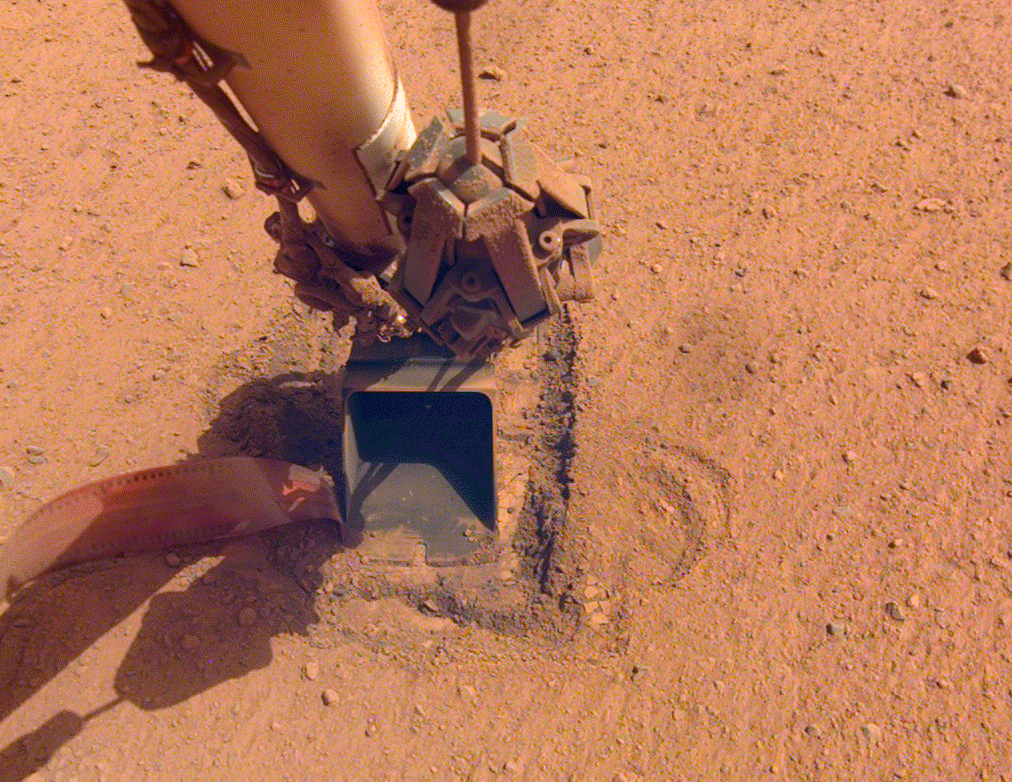NASA and the German Aerospace Center (DLR) have officially called it quits on the Mars InSight lander’s “mole.” The instrument was designed to drill deep into the Martian soil, but hit a snag soon after deployment and has now been abandoned after almost two years of troubleshooting failed to resolve the issue.
InSight touched down on the Red Planet in November 2018, before deploying its Heat Flow and Physical Properties Package (HP3) a few months later. The plan was to hammer a 16-in (40-cm) spike into the ground to a depth of at least 10 ft (3 m), where it could measure heat flowing from within Mars.
On February 28, 2019, the mole began its subterranean journey – but ground to a halt just an inch or so down. NASA tried hammering away repeatedly, in hopes of breaking through or pushing aside any hard rocks or gravel blocking the path. When that didn’t work, InSight’s arm-mounted camera was swung in to check out the problem. It revealed a thick layer of “duricrust” – hard clumped soil – was the culprit.
Unfortunately, that meant the drill didn’t have enough friction to push forward. So the scientists attempted a creative workaround: they attempted to push the scoop on the robotic arm against the probe, in turn pressing the probe against the side of its drill hole, to give it more traction. While it seemed to work for a little while, progress again came to a stop.

NASA/JPL-Caltech
The final attempt came just last week. On January 9, 2021, the team used the arm to scoop more soil on top of the probe, then tamp it down to try to give it more grip. After another 500 hammer strokes failed to make any further progress, the team has called an end to the mission.
“We’ve given it everything we’ve got, but Mars and our heroic mole remain incompatible,” says Tilman Spohn, principal investigator on the HP3 team. “Fortunately, we’ve learned a lot that will benefit future missions that attempt to dig into the subsurface.”
The mission is far from a bust though. The scientists say that they’ve learned a lot about the nature of Martian soil, which could provide valuable insights for future missions – including the first human visitors, who may have to go digging for water.
It’s not the end for InSight either. The craft has a suite of other instruments still in operation, including weather sensors, a seismometer to scan for “marsquakes” and a radio experiment that’s aiming to investigate whether the core of the Red Planet is liquid or solid. In fact, NASA has recently extended the mission until December 2022.
Source: NASA
Source of Article